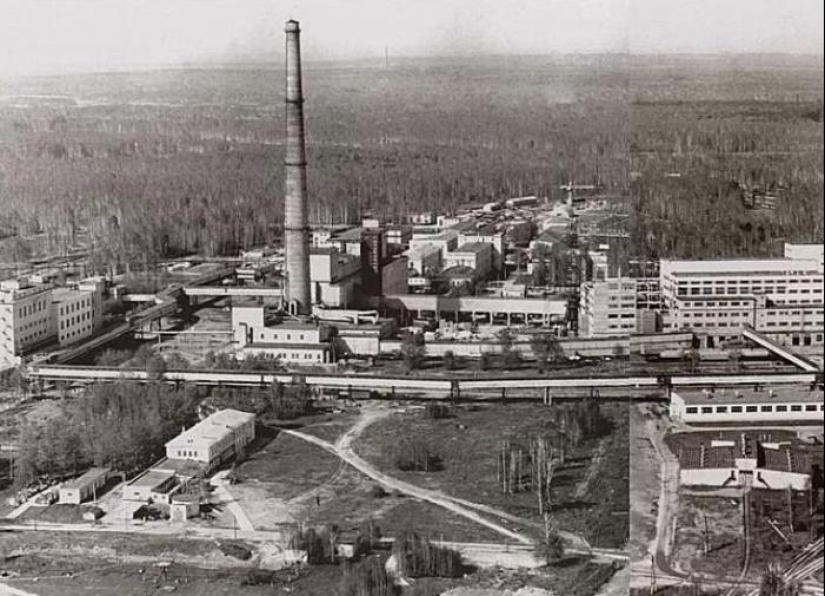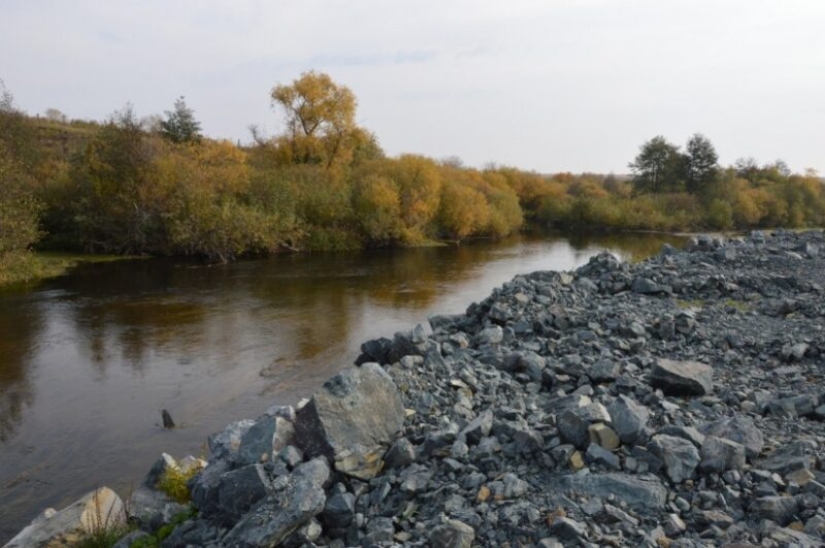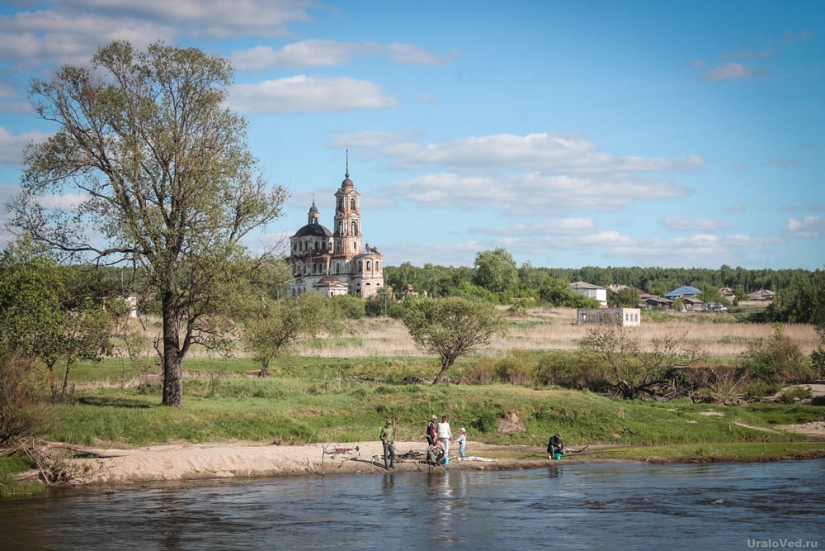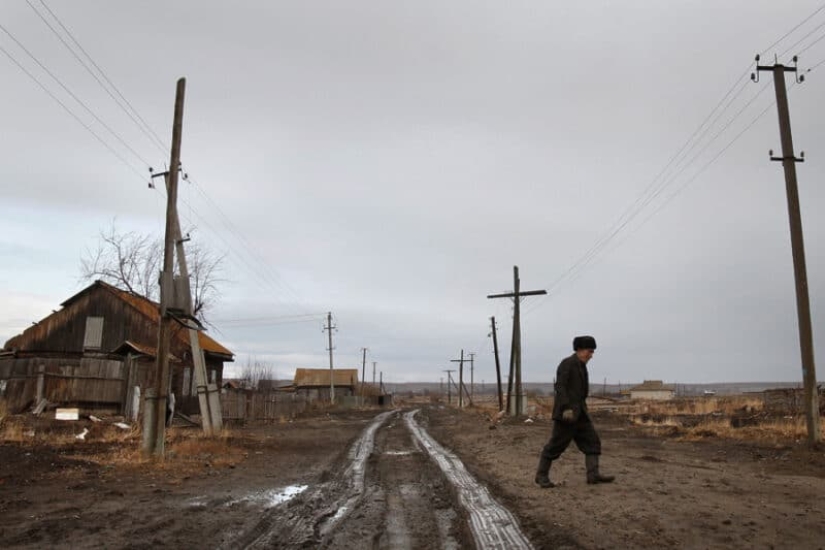Radioactive Techa, the sad story of Russia's most dangerous river
Categories: Ecology
By Pictolic https://pictolic.com/article/radioactive-techa-the-sad-story-of-russias-most-dangerous-river.htmlThe Techa River originates in the Chelyabinsk region and carries its waters 243 km . It is connected with the Kasli lake system, and the area of its basin exceeds 7,600 sq. km. In places, the river is very picturesque and simply beckons to the shore to relax and swim. But the trouble is that the Techa is a deadly river, hopelessly contaminated with radioactive elements.

Back in the early 40s of the last century, the Techa was the most common Ural river. People lived on its shores, fished and swam. But in 1946, construction began on the infamous Mayak plant, or D.I. Mendeleev Combine 817, the first enterprise to develop weapons-grade plutonium for nuclear weapons.

The industrial reactor building grew up on the shore of Lake Kyzyltash, right near the source of the river Techa. It is impossible to see this place now. And all because it is located on the territory of the "mailbox" - the closed city of Ozersk. At the beginning of the summer of 1948, the launch of the A‑1 uranium graphite nuclear reactor was carried out under the affectionate code name "Annushka".
But that was just the beginning. Soon other buildings were erected near the reactor, as the Mayak plant began to process spent nuclear fuel. People lived near the enterprise, most of whom knew nothing about the deadly danger of radiation. This industry was just developing then. Few people knew about the effect of radiation on living organisms.

And who cared about such trifles as the health of workers, engineers and the military, if the country needed to catch up and overtake America in the nuclear arms race? At Mayak, they knew that high-level radioactive waste was dangerous, so they were stored in special containers. As for low-level radioactive products, no one messed with them. They were simply drained right into the Leak.

These were technological liquids containing elements, the name of which today makes us horrified: strontium-89 and -90, caesium-137, ruthenium-103 and -106, zirconium-95 and niobium-95. In the 40s and 50s, only academics and a small circle of the elite knew about their properties.
The River Techa was abundantly fed with radioactive waste until 1956. All this time, the locals were not told anything about dangerous drains and they continued to live by the river as if nothing had happened, catch fish in it, swim and even wash. Water from the river fed local wells, from which they drank water and watered cattle in dozens of villages.
The peak of river pollution occurred in 1950-1951. During this short period, Techa received up to 98% of all man-made pollution. Such a radioactive attack led to obvious consequences in the form of the death of fish and animals. As a result, it was decided to unload the river. To do this, the Techensky cascade of reservoirs was built in its upper reaches, as well as two channels for the removal of polluted water.

These measures proved to be effective — in 1956, hazardous waste ceased to enter the river. But unfortunately, it was too late. The contamination with radionuclides turned out to be so strong that the river could not self-clean itself. Radioactive waste has now appeared not only at the bottom of the river, but also in the adjacent areas of the floodplain. People actively used the water from the Leak for agricultural and household needs. Because of this, some settlements were also infected with radiation.
Unfortunately, one Leak was not enough - the current carried the radionuclides along other rivers. In particular, the level of radiation in the Iset River, below the mouth of the Leak, has been increased. In addition, there are traces of contamination even in the Ob. However, in the great Siberian river, the radiation level is no longer dangerous for humans.

Surprisingly, the famous accident at the Mayak plant in 1957, which is sometimes called the Kyshtym disaster, did not affect the state of the Leak. The East Ural radioactive trace passed through the river valley and caused damage to other local reservoirs. By the way, today a repeat of this accident is no longer possible. And all because "Mayak" has not been storing waste in liquid form for a long time. Now vitrification technology is used for recycling.
According to the current state, the level of water pollution in the Current is exceeded by strontium-90 - by 290-690 times, and by caesium-137 - by 2-47 times. This means that it is not only impossible to swim and fish in the river. Even just approaching the shore is already dangerous. Despite this, local fishermen can be found on the banks of the Leak. However, they claim that they allegedly do not eat fish themselves, but feed them to cats and dogs.

Sometimes you can see vacationers, even with children. Some believe that the river has already been completely cleared of radioactive waste. The confidence of vacationers is fueled by the fact that there are no warning signs and barriers on the banks of the dangerous river.
The last time the inhabitants of the surrounding villages tried to protect them from danger in 1951, without particularly explaining what was the matter. Then the channel of the Leak was washed with clean running water, and the banks in the settlements were fenced with barbed wire. The remnants of this milestone can be seen in some places even now. In some places, orphaned concrete pillars remained from it.

In 1954-56, about 7.5 thousand people were resettled from settlements located on the banks of the Leak to other areas. After 2010, people were again resettled from the village of Muslyumovo. But residents have already received large doses of radiation. Therefore, there is a high mortality rate from cancer and other diseases of internal organs and blood.
Now scientists consider up to 124 thousand residents of coastal settlements to be irradiated, of which 28 thousand people have the status of having received a "significant dose". This is not surprising, since not only water and silt Leaks are radioactive, but also dust carried by the wind from its shores, as well as fish, waterfowl and even plants in its floodplain. It's hard to say when this picturesque river will become safe again. We can only say with certainty that neither we nor even our great-grandchildren will wait for this.

There are many places in the world that pose a radiation hazard. Some of them are polluted thanks to man, and in some places, like, for example, on the beaches of Guarapari in Brazil, nature itself has "tried".
Recent articles

Leonardo da Vinci was accused of being fond of orgies. William the Conqueror, despite all his successes, was called a "Bastard" ...

Modesty? Decency? A sense of tact? No, you haven't heard! Just look at what the people from the selection below are doing! No ...

American documentary photographer Bruce Davidson came to the UK in 1960 for a couple of months on the assignment of Queen magazine. ...